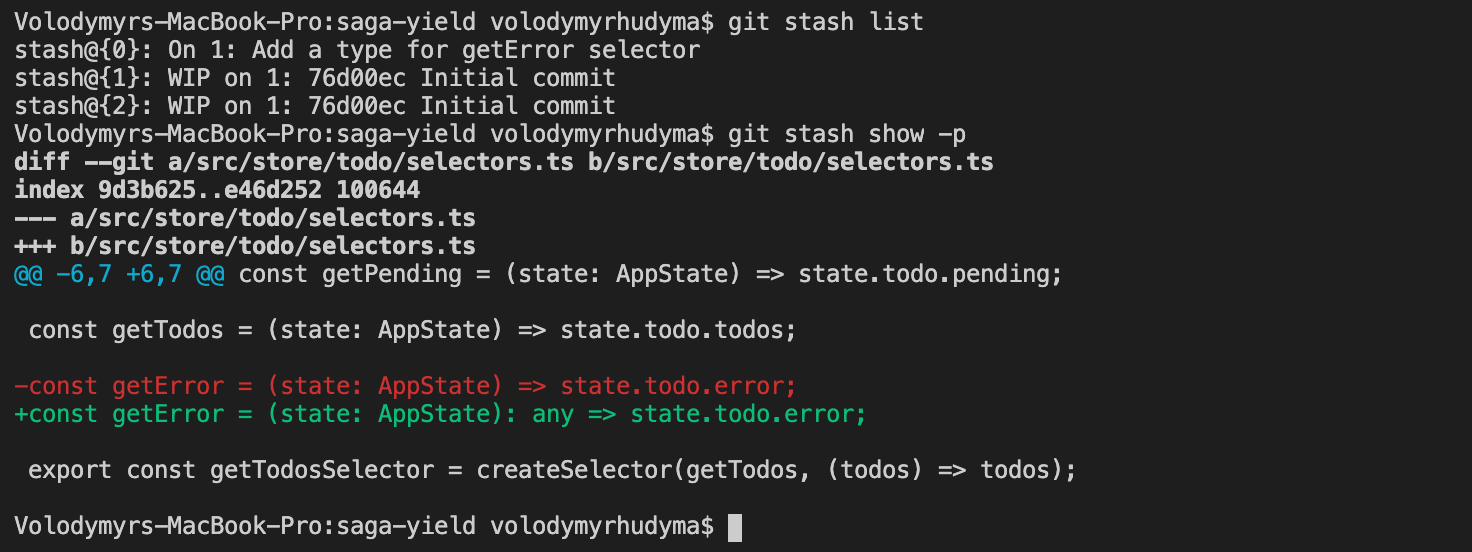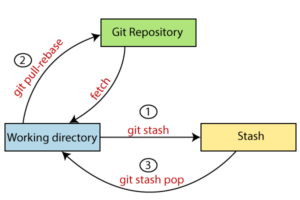
It is commonly used in the following situations: The git stash command makes it very easy to be flexible with your work. When you're ready, you can reapply your stashed changes to the working directory and commit as desired. The result is a clean working directory in which you can make new changes, fix bugs, develop a new feature, or something else. It allows you to stow away the changes that you are have currently made, for later. Git stash is a powerful Git command that is useful when you need to stop what you’re working on and switch to something else.
#Git stash list how to#
In this guide, you’ll learn how to use git stash and associated subcommands, plus have your common questions answered. Luckily, you can easily stash your uncommitted changes and come back to it later.
#Git stash list code#
Something more urgent or interesting may have come up, but you’re in the middle of a code change. When using Git, sometimes you’ll find yourself wanting to shift away from what you're currently working on, without losing uncommitted changes you've made in your working directory.

The git stash show command shows the changes recorded in the stash entry as a diff between the stashed contents and the commit back when the stash entry was first created. To view the changes of the files in the most recent stash entry, we need to do as follows. We can see that the test.txt has been stashed most recently. To view the files in the most recent stash entry, we need to follow. We can also view the contents of each stash entry. $ git stash WIP on main: b14f387 some WIP on main: b14f387 some other WIP on main: b14f387 some older workĪs shown above, we can see the list of three stash entries in the main branch of our Git repository.

For example, the integer n is equivalent to creating a few stash entries, we can view them like this. The stashes can be referenced by specifying the stash index. The most recent stash entry that is created is named The one before it is named and so on. The older stashes are found in the reflog of this reference. The latest stash entry we created is stored in the refs/stash. We can view the list of stash entries with the git stash list command. Thus, after performing the stashing many times, we now have a list of stash entries in our project’s Git repository. We can do this operation of shelving the changes on the working copy many times. The git stash command saves local changes and reverts the working directory to match the HEAD commit. It also allows us to save the current state of the index. The git stash command allows us to record the current state of the working directory of the project repository. We will now illustrate this with an example. This tutorial will learn how to view the list of stash entries in Git. The git stash command provides us with options to browse the list of stash entries. We thus would like to view the list of such stash entries and their contents. We can do this operation of temporary saving of work many times. It will enable us to later resume our work by retrieving it from the temporary store. The stash feature of Git, provided by the git stash command, allows us to save our changes for the work at hand temporarily. We later would like to resume back our original work.

Thus, we may need to save our current work for the time being and focus on the different work. We are often required to pause on the work and focus on something else in a development environment.


 0 kommentar(er)
0 kommentar(er)
